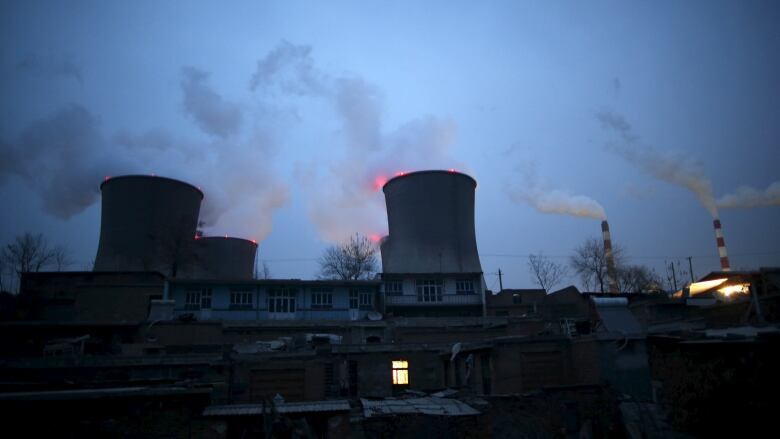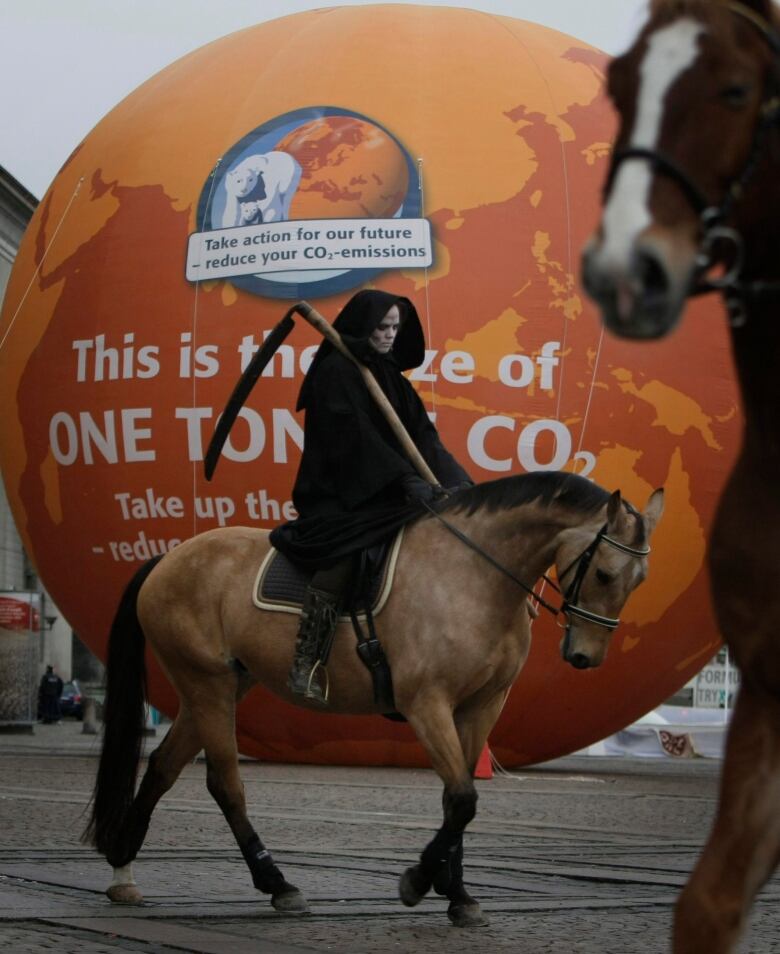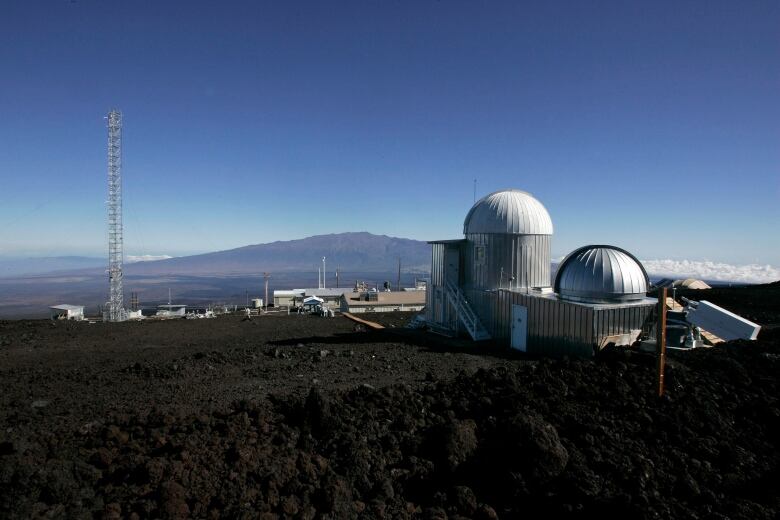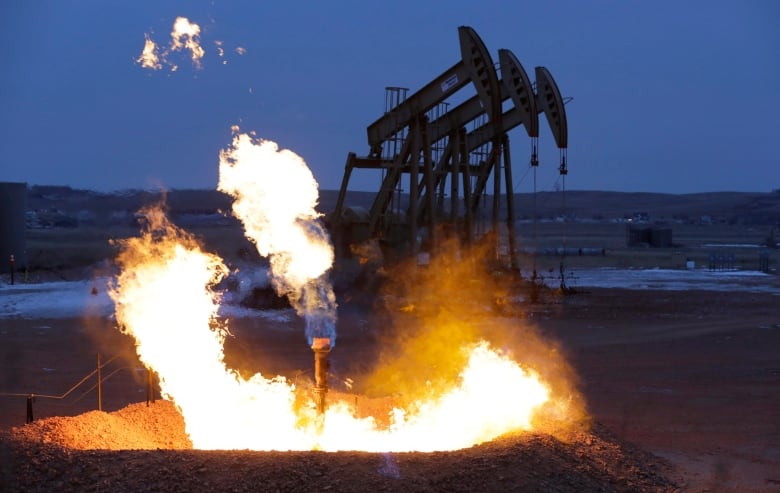CO2 and other greenhouse gases: What we can and can't measure
Emissions reported to United Nations are calculated, not measured

This article is part of apackage of special coverageof climate change issues by CBC News leading up to the United Nations climate change conference (COP21) being heldin Paris from Nov. 30 to Dec. 11.
Greenhouse gas levels in the Earth's atmosphere are higher than they havebeen in two million yearsand that's making our little planet hotter.
It's thanks in no small part to the huge volumesbeing spewed out by humans burning fossil fuels, and Canadians are some of the highest emitters per person in the world.
We've seen the graphs. But have you ever wondered where the data comes from? And what the limitations of those measurements might be?
Here are some questions you might have about measuring greenhouse gases and some answers.
- ANALYSIS |COP21must address the trade cost of carbon pricing: DonPittis
- VIDEO|Paris climate change conference: What you need to know
How much carbon dioxide does Canada emit each year?
In 2013, Canada reportsthat it emitted the equivalent of 726 million tonnes of carbon dioxide or 20.7 tonnes per person.
A tonne of carbon dioxide is approximately the amount that would be emitted by a Honda Civic driving from Vancouver to Halifax (or commuting 10 kilometres each way to work for a little over a year).

How much carbon dioxide is in Earth'satmosphere right now?
This past March, average levels of carbon dioxide, the most prevalent heat-trapping gas in the atmosphere, climbed to a level of 400 parts per million in the Earth's atmosphere, a milestone scientists consider worrying.
Parts per million or ppm refers to how many carbon dioxide molecules there are in dry air compared to molecules of other gases, such as nitrogen and oxygen.
Scientists use that measure because it doesn't change with pressure, temperature or altitude.
Each 2.12 billion tonnes of carbon or 7.79 billion tonnes of carbon dioxide in the atmosphere boosts levels by one part per million.
Where do measurements of average carbon dioxide in the atmosphere come from?
They're measured at about a dozen key sites around the world, including Alert, Nunavut, and Mauna Loa Observatory, Hawaii.
Those sites are typically chosen because they are:
- Far from human activity that could boost local greenhouse gas levels;
- Barren, minimizingthe effect of vegetation, which takes in carbon dioxide during photosynthesis and releases it during respiration.

How are the measurements done?
Carbon dioxide traps heat or infrared light that's how it causesglobal warming.
To measure it, air from the atmosphere is pumped into a machine that detects the amount of infrared light absorbed by that air compared to air that has no carbon dioxide, says Pieter Tans, senior scientist at the Global Monitoring division of the U.S. National Oceanic and Atmospheric Administration's Earth Systems Research Laboratory in Boulder, Colo.
"In fact, it's the greenhouse effect that we use to measure [carbon dioxide]."
How do we know what levels of carbon dioxide were in the past?
Mauna Loa, the oldest station, started its measurements in 1958. Alert began its measurements in 1975.
But snow and ice cores from places like Greenland, Antarctica and Canada contain air trapped from decades, centuries, or even tens of thousands of years ago. That air can be extracted and its carbon dioxide levels measured using exactly the same techniques as those used for "modern" air, Tans says. Those measurements show that carbon dioxide levels have been climbing 100 times faster than natural rises in the past.

When we measure carbon dioxide, can we tell how much came from burning fossil fuels?
Yes. The carbon in carbon dioxide comes in different forms called isotopes, namely carbon-12, carbon-13 and carbon-14. Levels of each vary depending on the source of the carbon dioxide, says Doug Worthy, study lead for Environment Canada's greenhouse gas observational program.
Natural gas, coal and oil each also have distinct signatures for carbon-13, Worthy said.
Meanwhile, higher levels of carbon-14 mean that carbon dioxide sample is mostly from natural sources, such as plants. Lower levels mean it's mostly from burning fossil fuels.
Carbon-14 decays with a half-life of 5,700 years. After 5,700 years, there's only half left, after 11,400 years, there's only a quarter and so on.
"Fossil fuel is millions of years old. There's no C14 in fossil fuels," Worthy said.

How do we measure how much carbon dioxide is being produced by individual countries?
Canada and other countries that have signed the United Nations Framework on Climate Change must report their greenhouse gas emissions to the UN each year.
Those emissions are estimates from calculations and indirect data. They're not measured, says Lindsay Pratt, chief of quality measurement and verification at Environment and Climate Change Canada.
What is measured is data about activities that generate emissions "for example, how much fuel is burned in Canada that's used in vehicles."
There is typically a mathematical relationship that lets you calculate emissions if you know the amount of greenhouse gas-spewing activity. That might be in the form of:
- A simple number called an "emission factor;"
- A chemical formula that describes the amount of greenhouse gases produced in a chemical reaction;
- The difference between the mass of the raw materials and the mass of the products the missing mass can represent the greenhouse gases that escaped through the smokestack.
With very slow emissions such as those from landfills, calculating emissions over time may require computer modelling.
Can we verify if reported emissions are accurate?
Not at the moment, a situation thathas generated concerns about the accuracy of some reports. For example, in November, it came to light that China was burning much more coal than reported, meaning that China has been spewing about a billion tonnes more CO2 each year than estimated.
But there are two kinds of greenhouse gas measurements that could help prevent that kind of deception in the future:
- Local measurements at thousands of towers around the world in a wide range of places such as wetlands and urban areas;
- Space-based measurements from satellites, such as NASA's Orbiting Carbon Observatory 2.

"Some of the studies we have done in the past show we come relatively close, within 10 per cent," he said.
But space-based observations have the potential to cover a much larger area than an individual towers. OCO-2, launched in 2014, can see the buildup of carbon dioxide around cities, says project scientist Michael Gunson, but researchers are still trying to figure out whether the scale of the data is "good enough to verify human activity."
What else can those measurements tell us?
While they can be used for other things, the main goal of local and space-based measurements is to understand where the carbon dioxide we emit goes. So far, about half stays in the atmosphere and half somehow gets absorbed by places like the ocean, says Gunson.
"How long can that be sustained? And what will happen to that airborne fraction that's in the atmosphere? Will it change? Will it go up or will it go down?" Gunson asks. "If you can understand that, you'll reduce one of the biggest uncertainties of climate change."












_(720p).jpg)


 OFFICIAL HD MUSIC VIDEO.jpg)
.jpg)



























































































